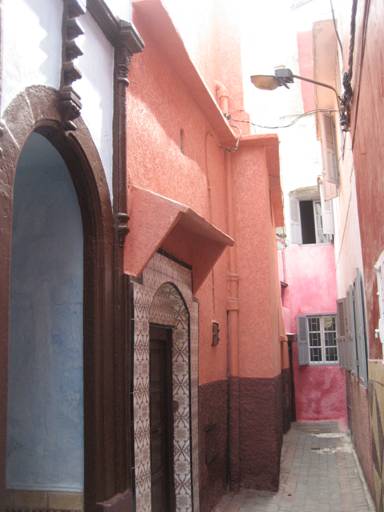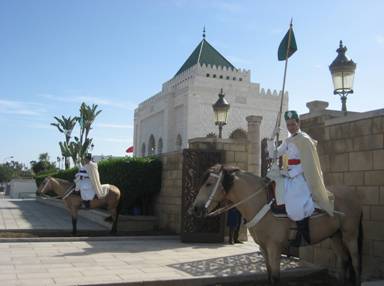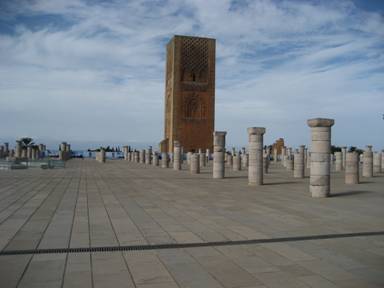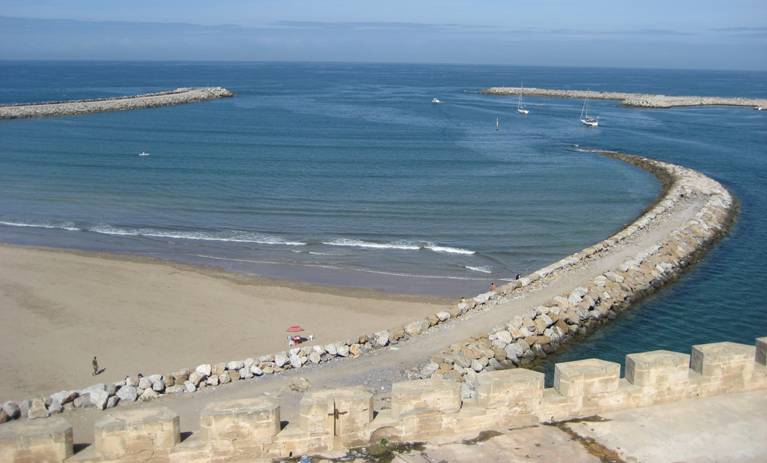Rabat & Salé

|
Today by contrast we took the spanking new tramway across the river and into the heart of Rabat itself. It was a more sophisticated version of the country on show and not as enjoyable, as the old city is a big tourist draw and the streets and commerce of the area felt much less authentic. We did find our way to the Kasbah (after shaking off the unsolicited attention of a guide) and approached it via a walk through an extensive cemetery overlooking the coast which was atmospheric. The Kasbah des Oudaias (fortified town) has become a sort-after (and therefore expensive) place to live and the ancient houses within its walls are all painted blue and white with beautifully decorated doorways. (Left) one of the 3 huge cemeteries and (right) the walls and gateway to the Kasbah
After a lunch (including tagines of course) in a restaurant set into the medina walls, we visited the Tower of Hassan which we can see across the river from our boat here. It was built in 1197 and is in fact the minaret for a mosque that was never finished but which was designed to hold 40,000 and be the second largest in the world. If you know the famous Giralda tower in Seville, it was designed by the same architect and the decorative carvings on both have a lot in common. Near the tower is the mausoleum of Morocco’s King Mohammed V who reigned when the country achieved independence from France in the mid 1950s. It was the usual lovely and peaceful set of buildings that Islam seems to produce and was guarded by some imposing mounted soldiers in traditional dress.
We have a bit more local exploring to do whilst here, but may move on before long on our next 3-4 night leg to the Canaries as we have friends coming to join us there. We won’t have ventured very far in the end or seen any of the country’s magnificent scenery, but we can always return one day and we do feel lucky to have had a flavour of real life in this area at least. The port’s meagre sea defences, not much protection from the frequently huge Atlantic swells:
Back onboard this evening we are enjoying the very musical calls of the Muezzin with a glass of cold Portuguese wine in our hands: naughty but essential! |





